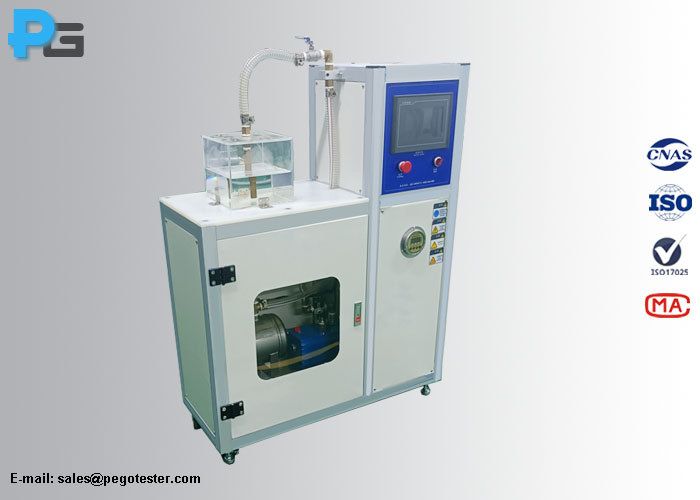1. What is the Siphon Phenomenon?
You might have seen this scenario in daily life: take a hose, fill it with water first, put one end into a bucket at a higher place, and the other end at a lower spot. Water will “automatically” flow from the higher bucket to the lower one along the hose — this is the siphon phenomenon. Its principle is quite clever: it uses the pressure difference caused by the liquid level difference to make the liquid flow along the pipe under the combined action of “negative pressure suction” and “gravity”, as if building an “automatic slide” for the liquid.
However, there is a more alarming “reverse operation” — the backsiphonage phenomenon: normally, tap water should flow from the main water supply pipe (with high pressure and high water level) to user terminals (such as home faucets and washing machines). But if the pressure of the main water supply pipe drops suddenly (e.g., due to pipe maintenance or heavy water use nearby), the water in the user-side pipes — even water with impurities (like sewage from washing machines or muddy water in garden hoses) — will be “sucked” back into the main water supply pipe, resulting in “sewage backflow”.
2. Hazards of Backsiphonage: A Hidden Risk of Polluting Public Water Sources
To put it simply, the hazard of backsiphonage is that it pollutes clean public water sources with dirty water.
Take an example: Suppose your home washing machine has just finished washing dirty clothes. At this moment, the pressure of the community’s main water supply pipe drops suddenly. The sewage in the washing machine’s water inlet pipe may be “pulled” back into the community’s tap water main pipe through backsiphonage. In this case, the public drinking water source of the entire community (or even a larger area) will be polluted. People who drink or use this polluted water are likely to suffer from health problems such as gastrointestinal diseases.
Beyond households, if backsiphonage occurs in water-connected equipment in hospitals or factories, water containing germs or chemical impurities will flow back into the water supply system, and the hazards will be even more serious.
3. Significance of the Backsiphonage Test: “Vaccinating” Water Safety in Advance
The core function of the backsiphonage test is to simulate scenarios where backsiphonage may occur, and assess whether household equipment (such as washing machines, dishwashers connected to tap water, or hose assemblies) can “block” backsiphonage and prevent sewage backflow.
It is like a “safety drill”: before the equipment is actually put into use, it first verifies the equipment’s “backflow prevention capability” — ensuring that even in case of abnormal water supply pressure, two lines of defense can be maintained: first, protecting public water sources from pollution; second, protecting the equipment itself (e.g., preventing impurities from flowing back and damaging internal structures).
4. How to Conduct a Backsiphonage Test?
For the method of the backsiphonage test, you can refer to the international standard IEC 61770 (Electric Appliances Connected to the Water Mains – Avoidance of Backsiphonage and Failure of Hose-sets). The steps in plain language are as follows:
1). Test Preparation
Dry the inside of the pipes and hoses between the equipment’s water inlet valve and backflow preventer to avoid residual water interfering with the test.
Find a transparent hose (its inner diameter shall not be smaller than that of the equipment’s original water inlet hose) to replace the equipment’s original hose set; connect the other end of the transparent hose to a vacuum pump via a short pipe (to simulate the “negative pressure scenario” where the pressure of the water supply pipe decreases).
2). Simulate Real Water Use Conditions
Use an independent water source to fill the equipment to the “critical water level” and maintain this level throughout the test.
Apply a negative pressure of approximately 65 kPa (with an allowable error of ±15 kPa) to the system using the vacuum pump, and maintain it for at least 5 seconds; at the same time, keep the equipment’s solenoid valve open (to simulate normal water use).
3). Check the “Backflow Prevention Capability”
After the test, check if there is water in the transparent hose: if there is no water, it means the equipment’s backflow preventer can effectively block backsiphonage; if there is water, it means backsiphonage can “break through” the defense, and the equipment needs improvement.
Check if the hose-set is damaged: after the test, the hose assembly shall be undamaged (no visible cracks or deformation), and it shall be usable normally without medium leakage or airtightness failure.
PEGO has launched a specialized backsiphonage test apparatus for this test, allowing users to conduct relevant tests with this equipment.
5. Standards to Meet: International and Domestic “Safety Benchmarks”
Internationally, there is a standard like IEC 61770; in China, there is also GB/T 23127 (Electric Appliances Connected to Water Sources – Avoidance of Siphonage and Failure of Hose Assemblies), which is adopted equivalently from IEC 61770 — these are the “safety benchmarks” for the backsiphonage test.
These standards specify details such as test methods, pressure parameters, and qualification criteria (e.g., “no water shall enter the transparent hose”), ensuring that all water-connected appliances (such as washing machines and water heaters) pass unified tests to verify their “backsiphonage prevention capability”. Ultimately, they safeguard the cleanliness of the public water supply system and people’s water use health.
The siphon phenomenon is an ingenious physical law, but backsiphonage hides pollution risks; the backsiphonage test is like a “safety examiner” — it tests whether equipment can block backsiphonage in accordance with standards such as IEC 61770, making our water use safer.




